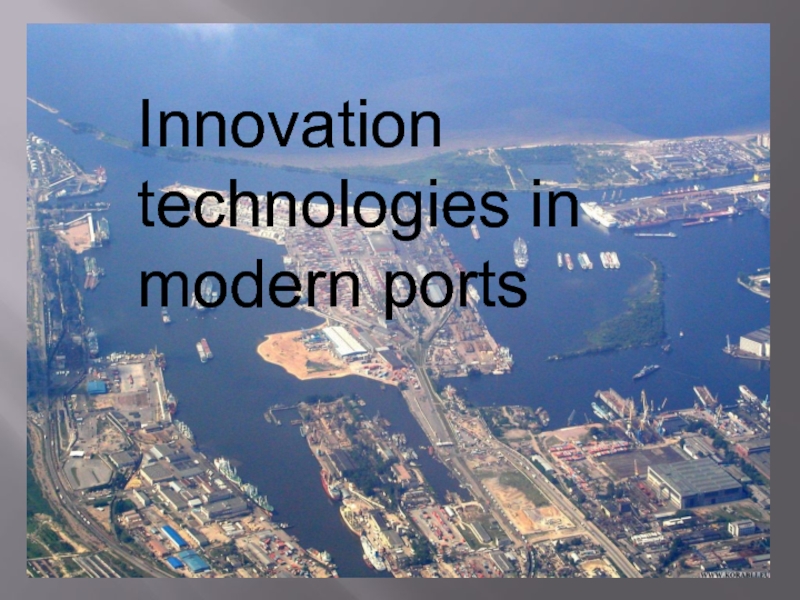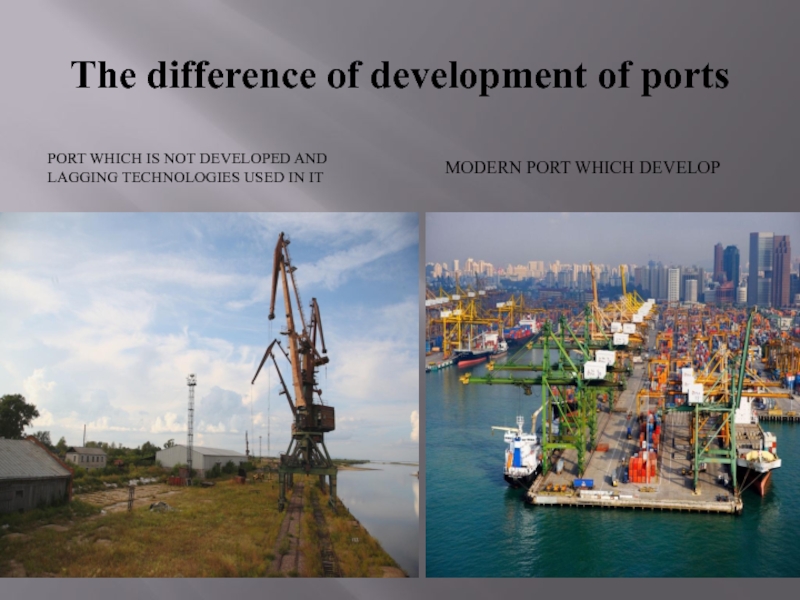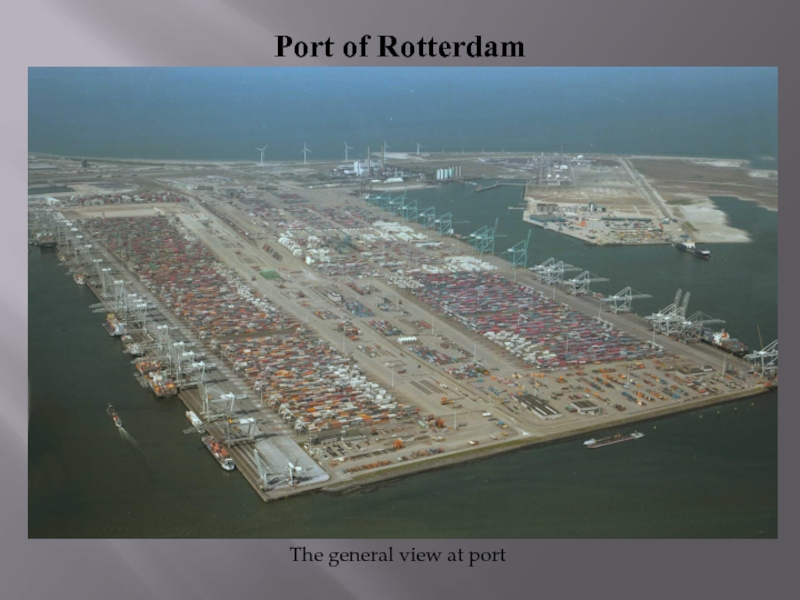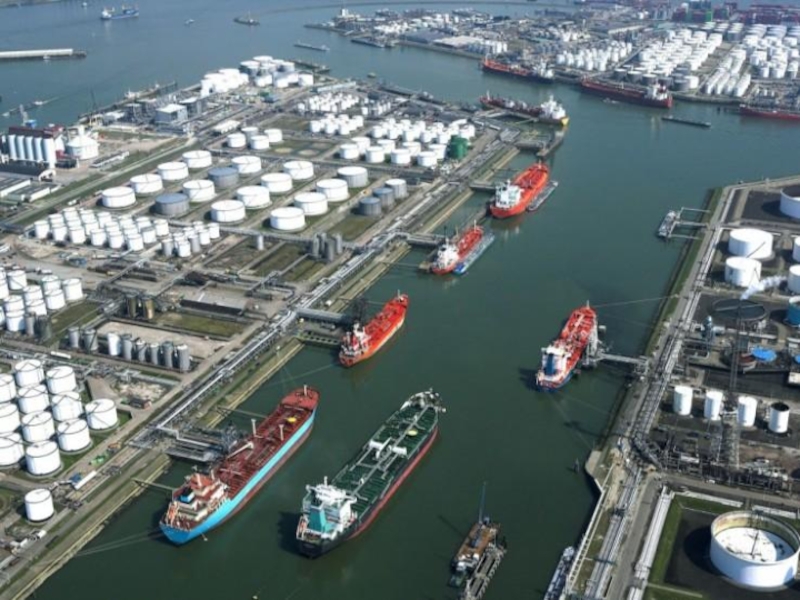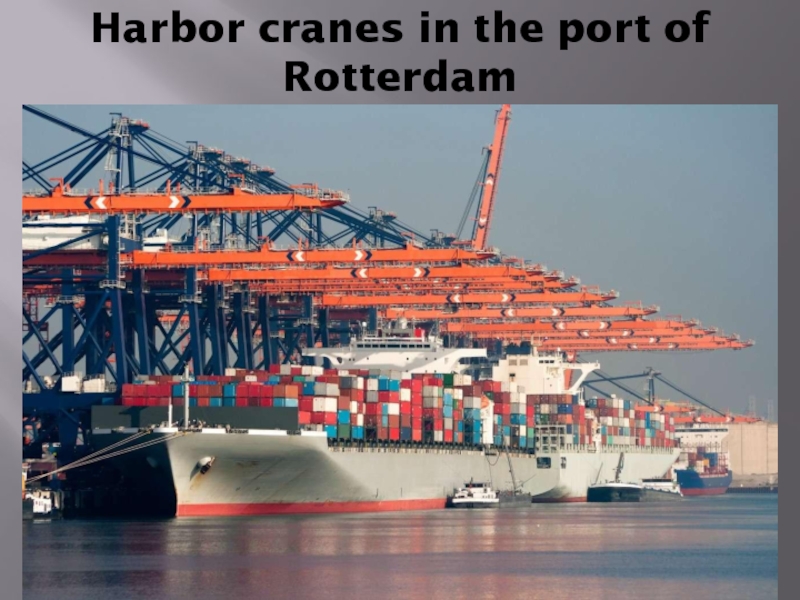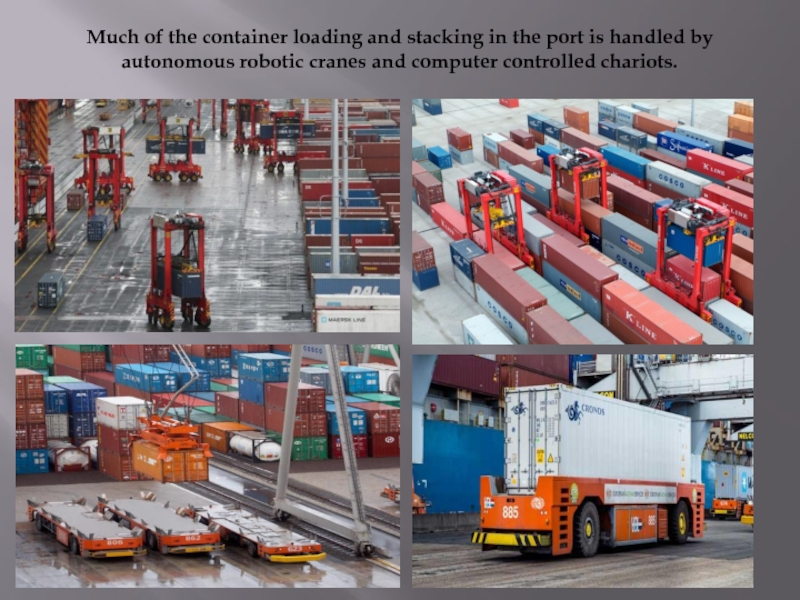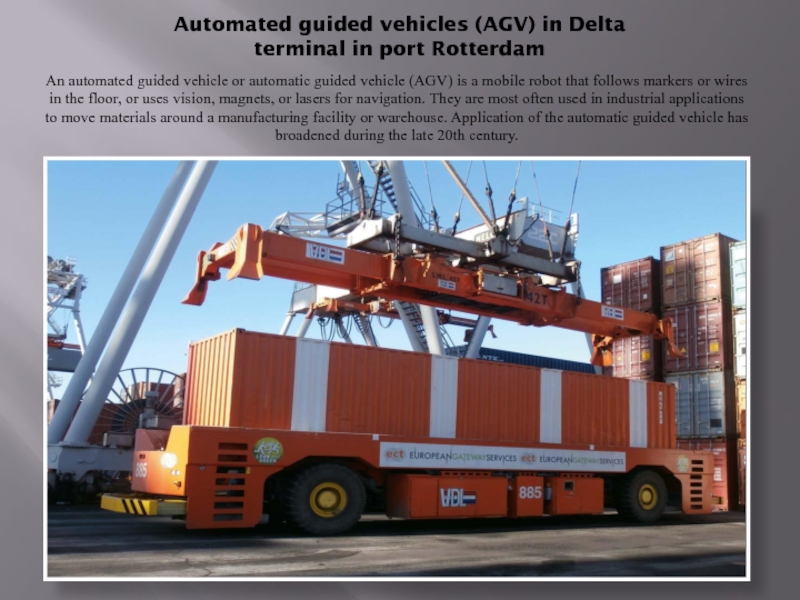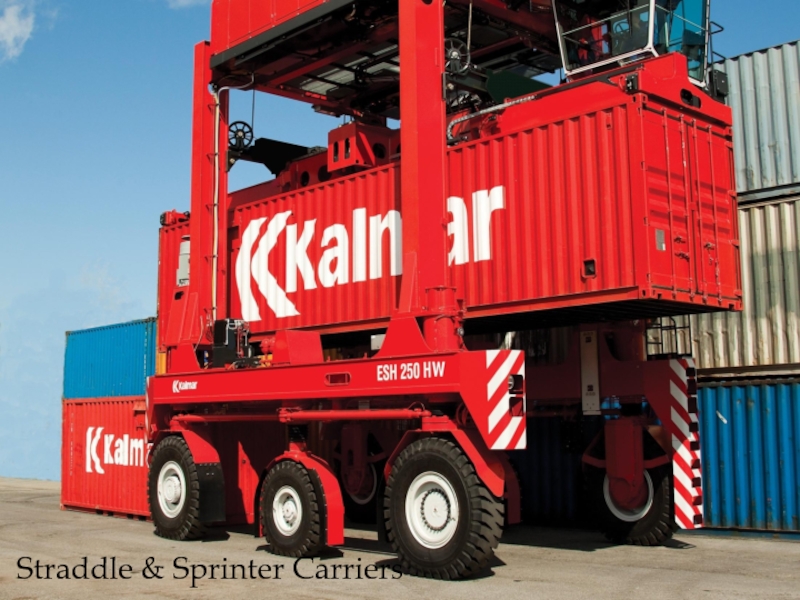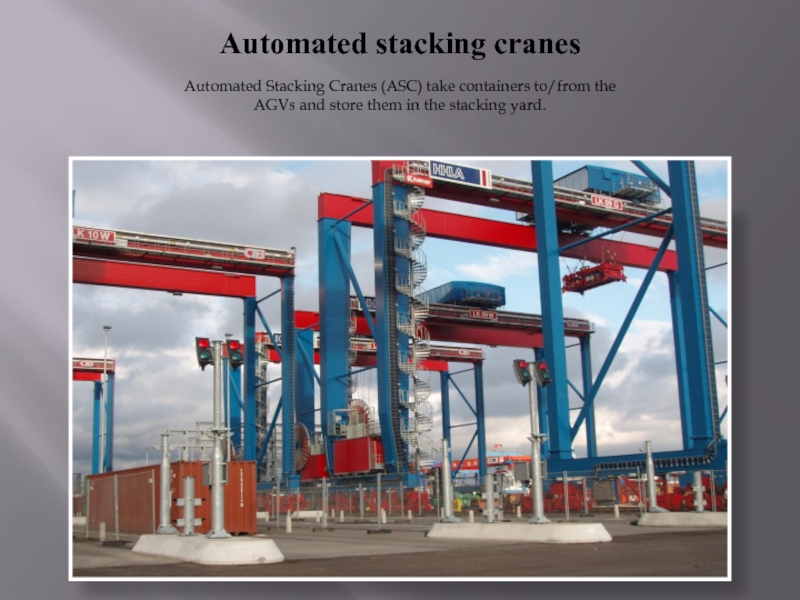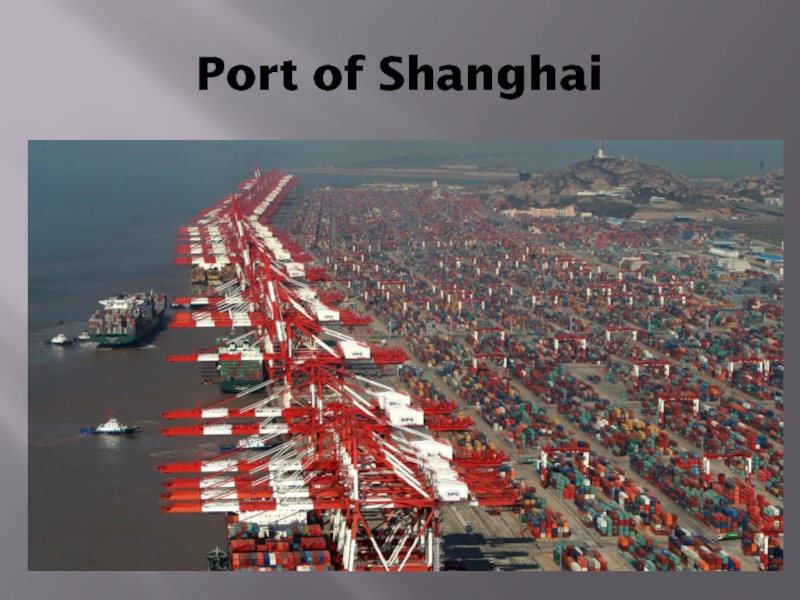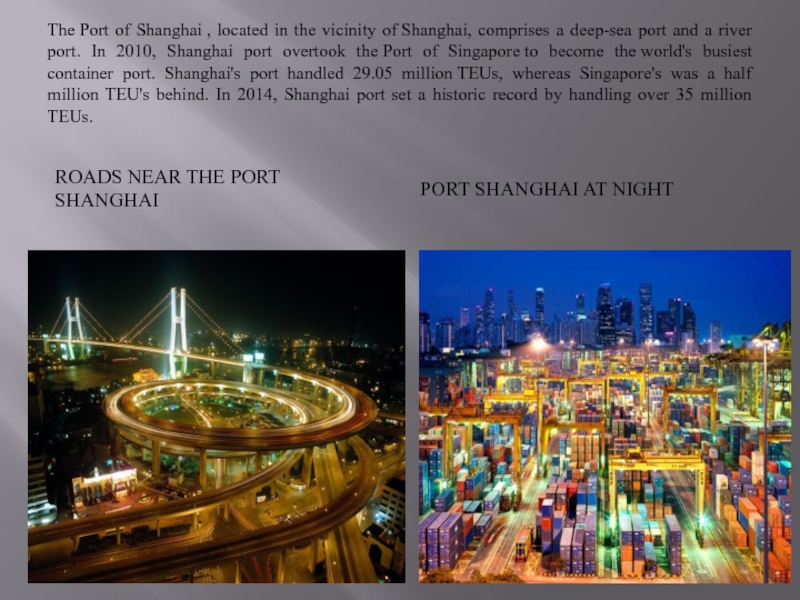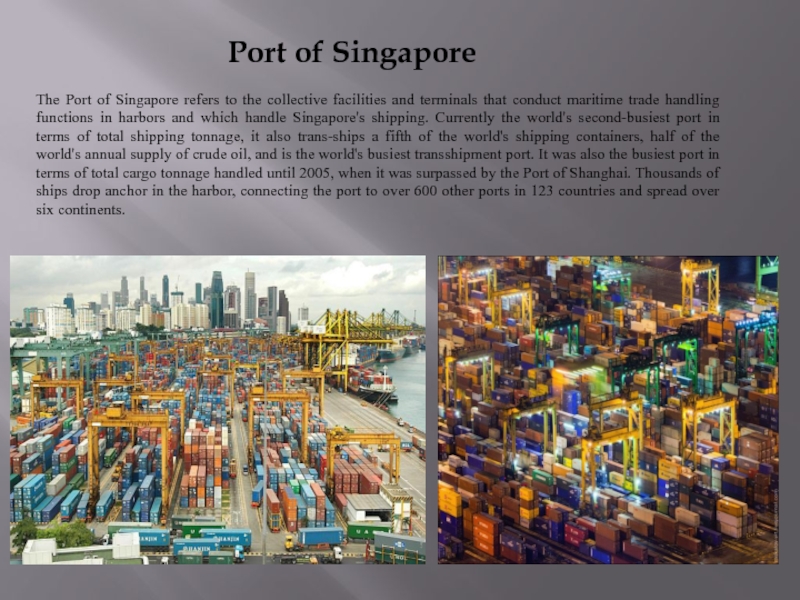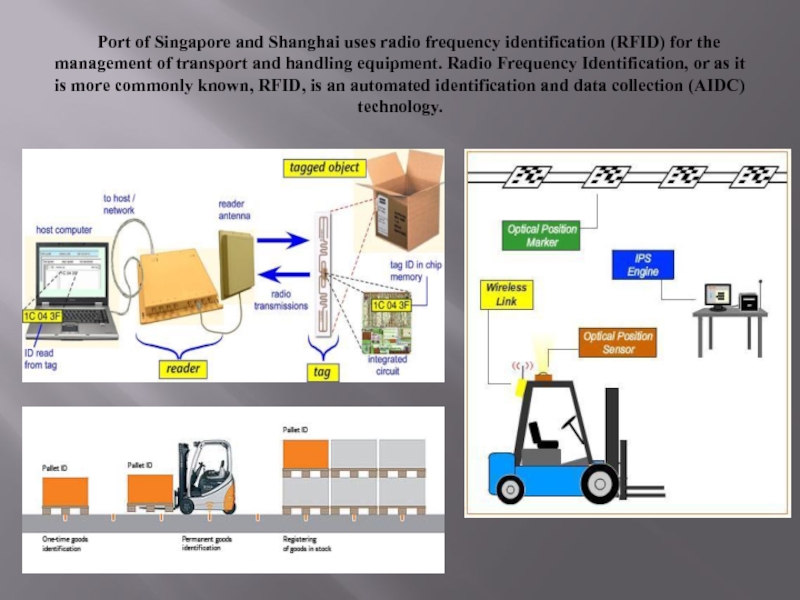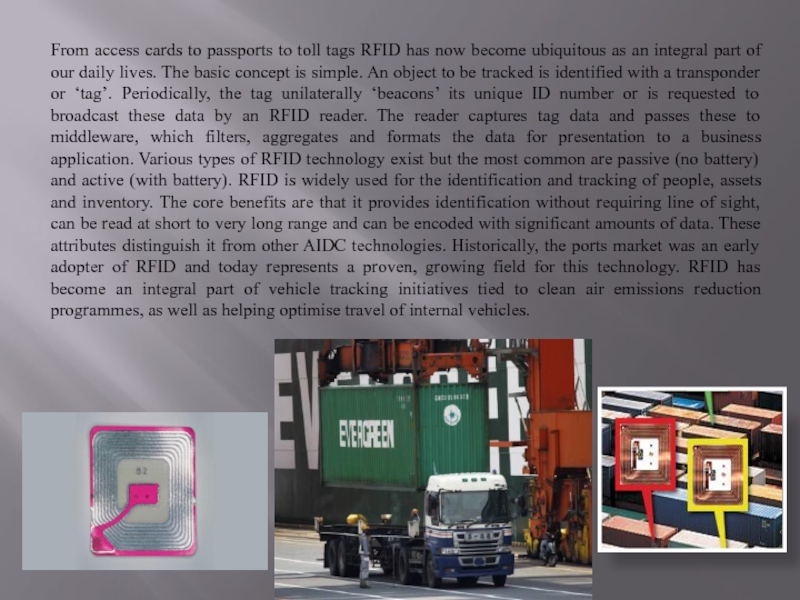- Главная
- Разное
- Дизайн
- Бизнес и предпринимательство
- Аналитика
- Образование
- Развлечения
- Красота и здоровье
- Финансы
- Государство
- Путешествия
- Спорт
- Недвижимость
- Армия
- Графика
- Культурология
- Еда и кулинария
- Лингвистика
- Английский язык
- Астрономия
- Алгебра
- Биология
- География
- Детские презентации
- Информатика
- История
- Литература
- Маркетинг
- Математика
- Медицина
- Менеджмент
- Музыка
- МХК
- Немецкий язык
- ОБЖ
- Обществознание
- Окружающий мир
- Педагогика
- Русский язык
- Технология
- Физика
- Философия
- Химия
- Шаблоны, картинки для презентаций
- Экология
- Экономика
- Юриспруденция
Innovation technologies in modern ports презентация
Содержание
- 1. Innovation technologies in modern ports
- 2. In the era of economic globalization, to
- 3. The difference of development of ports PORT
- 4. Port of Rotterdam
- 6. Harbor cranes in the port of Rotterdam
- 7. Much of the container loading and stacking
- 8. Automated guided vehicles (AGV) in Delta terminal
- 9. Straddle & Sprinter Carriers
- 10. Automated stacking cranes Automated Stacking Cranes (ASC)
- 11. Port of Shanghai
- 12. The Port of Shanghai , located in the vicinity
- 13. Port of Singapore The Port of Singapore
- 14. Port of Singapore and Shanghai uses radio
- 15. From access cards to passports to toll
- 16. Thank you for attention
Слайд 2In the era of economic globalization, to compete in the international
market, modern port requires constant development and innovative technologies.
Слайд 3The difference of development of ports
PORT WHICH IS NOT DEVELOPED AND
LAGGING TECHNOLOGIES USED IN IT
MODERN PORT WHICH DEVELOP
Слайд 7Much of the container loading and stacking in the port is
handled by autonomous robotic cranes and computer controlled chariots.
Слайд 8Automated guided vehicles (AGV) in Delta terminal in port Rotterdam
An automated
guided vehicle or automatic guided vehicle (AGV) is a mobile robot that follows markers or wires in the floor, or uses vision, magnets, or lasers for navigation. They are most often used in industrial applications to move materials around a manufacturing facility or warehouse. Application of the automatic guided vehicle has broadened during the late 20th century.
Слайд 10Automated stacking cranes
Automated Stacking Cranes (ASC) take containers to/from the AGVs
and store them in the stacking yard.
Слайд 12The Port of Shanghai , located in the vicinity of Shanghai, comprises a deep-sea
port and a river port. In 2010, Shanghai port overtook the Port of Singapore to become the world's busiest container port. Shanghai's port handled 29.05 million TEUs, whereas Singapore's was a half million TEU's behind. In 2014, Shanghai port set a historic record by handling over 35 million TEUs.
ROADS NEAR THE PORT SHANGHAI
PORT SHANGHAI AT NIGHT
Слайд 13Port of Singapore
The Port of Singapore refers to the collective facilities
and terminals that conduct maritime trade handling functions in harbors and which handle Singapore's shipping. Currently the world's second-busiest port in terms of total shipping tonnage, it also trans-ships a fifth of the world's shipping containers, half of the world's annual supply of crude oil, and is the world's busiest transshipment port. It was also the busiest port in terms of total cargo tonnage handled until 2005, when it was surpassed by the Port of Shanghai. Thousands of ships drop anchor in the harbor, connecting the port to over 600 other ports in 123 countries and spread over six continents.
Слайд 14 Port of Singapore and Shanghai uses radio frequency identification (RFID) for
the management of transport and handling equipment. Radio Frequency Identification, or as it is more commonly known, RFID, is an automated identification and data collection (AIDC) technology.
Слайд 15From access cards to passports to toll tags RFID has now
become ubiquitous as an integral part of our daily lives. The basic concept is simple. An object to be tracked is identified with a transponder or ‘tag’. Periodically, the tag unilaterally ‘beacons’ its unique ID number or is requested to broadcast these data by an RFID reader. The reader captures tag data and passes these to middleware, which filters, aggregates and formats the data for presentation to a business application. Various types of RFID technology exist but the most common are passive (no battery) and active (with battery). RFID is widely used for the identification and tracking of people, assets and inventory. The core benefits are that it provides identification without requiring line of sight, can be read at short to very long range and can be encoded with significant amounts of data. These attributes distinguish it from other AIDC technologies. Historically, the ports market was an early adopter of RFID and today represents a proven, growing field for this technology. RFID has become an integral part of vehicle tracking initiatives tied to clean air emissions reduction programmes, as well as helping optimise travel of internal vehicles.
